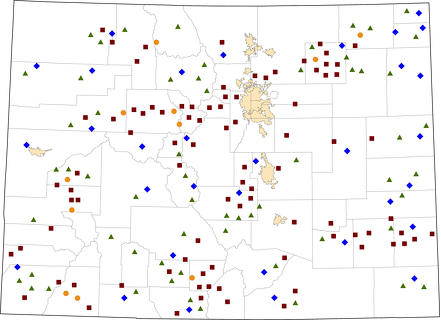Colorado
State Office of Rural Health
Phone: 303.832.7493
Email: info@coruralhealth.org
view details
Colorado Nonmetro Population
Colorado Rural Healthcare Facilities
Selected Social Determinants of Health for Rural Colorado
While most Coloradans have health insurance coverage, 7.0% remain uninsured (Kaiser, 2022). According to the USDA Economic Research Service, the average per capita income for Coloradans in 2021 was $70,706, with the rural per capita income at $63,508. The ERS reports, based on 2021 ACS data, that the poverty rate in rural Colorado is 12.2%, compared with 9.4% in urban areas of the state. 8.7% of the rural population has not completed high school, while 7.5% of the urban population lacks a high school diploma according to 2017-2021 ACS data reported by ERS. The unemployment rate in rural Colorado is 3.1%, while in urban Colorado, it is 3.0% (USDA-ERS, 2022).
Data Sources
Kaiser
Family Foundation State Health Facts;
USDA Economic Research Service: State Fact Sheets
Contacts
There are more organizations related to Colorado in the organizations section.
Last Reviewed: 11/16/2023


